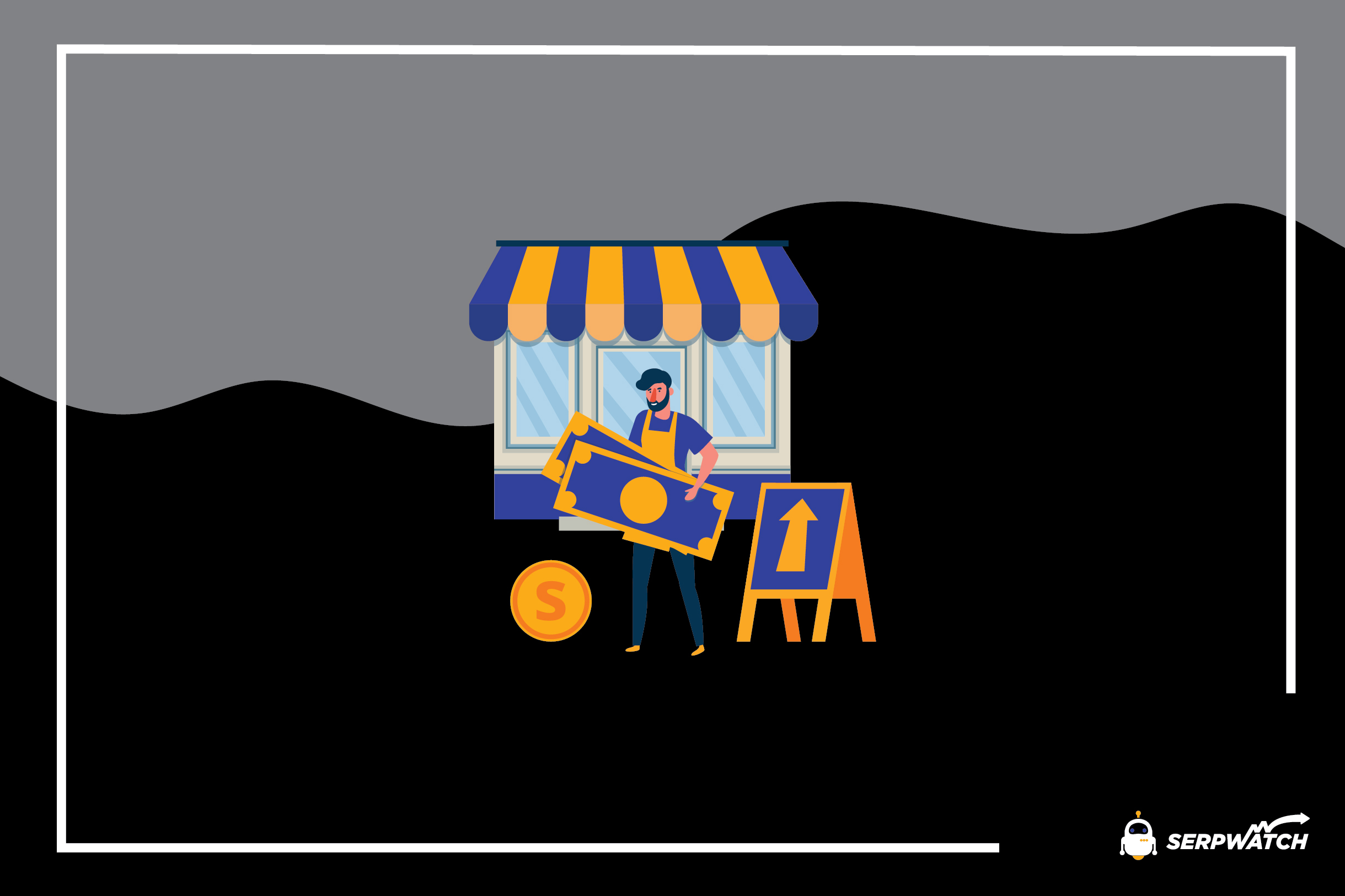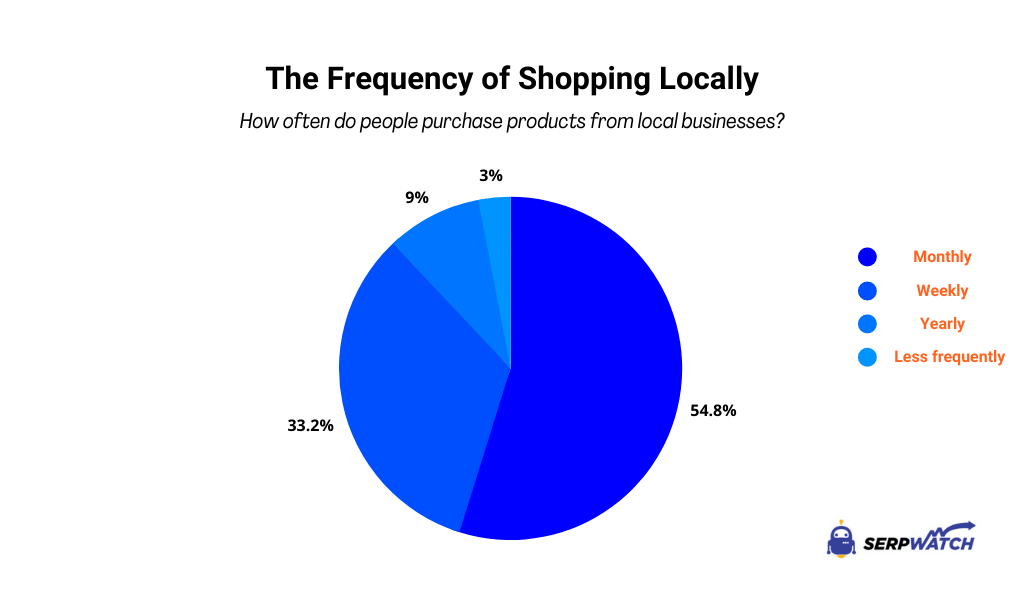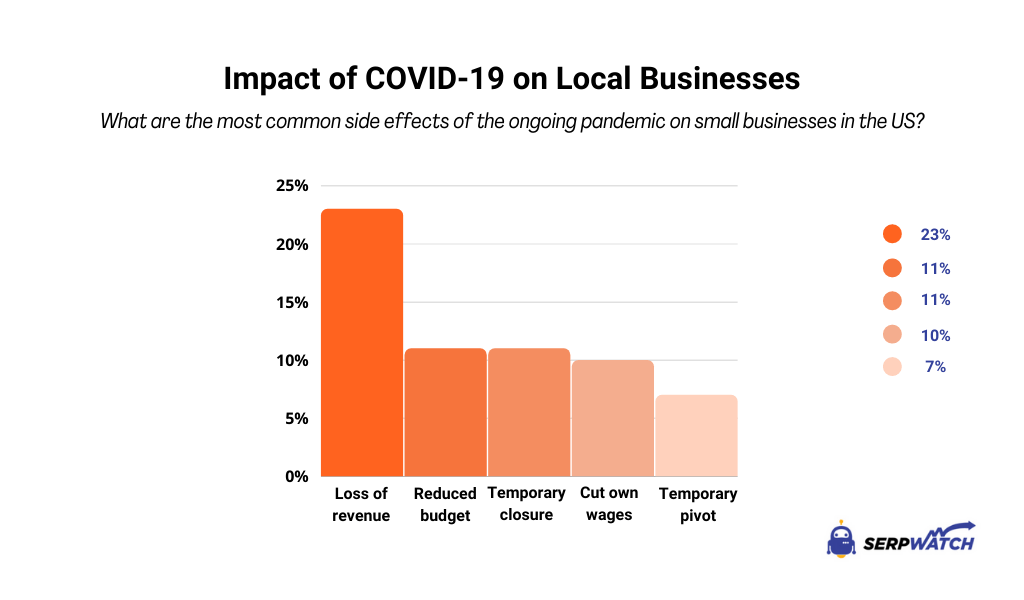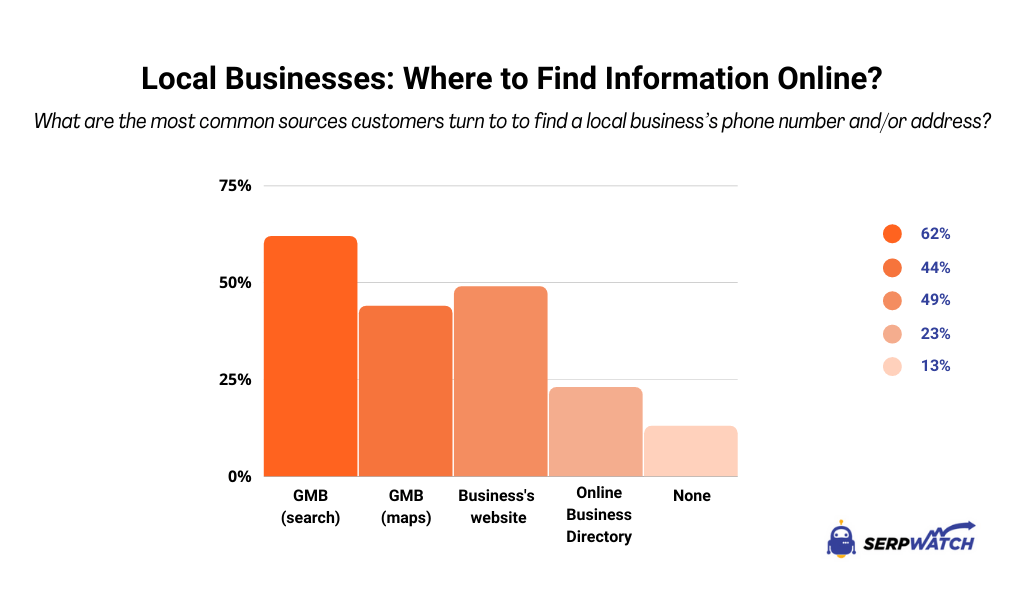
Local Business Statistics 2024: Economic Impact, COVID-19, SEO

By selecting the most relevant local business statistics, we wanted to paint the real picture of the situation in local communities across the US.
As we all know, local businesses and chain stores are locked in a perpetual battle for customers and profits. So, can this modern tale of David and Goliath provide exciting insights and help SEO specialists understand the importance of local rank tracking? Let’s see what the stats show.
Top Local Business Statistics | Editor’s Choice
- Small, locally-owned businesses account for 44% of the US economy.
- Businesses with fewer than 500 employees account for 47.5% of the private-sector workforce.
- 54.81% of Americans shop at a local store at least once a month.
- 70% of consumers shop locally to boost the local economy.
- In 2019, Small Business Saturday generated $19.6 billion in revenue.
- 49% of consumers shopped locally during the pandemic to support local companies.
- 80% of millennials made an extra effort to buy locally during the pandemic.
- 64% of consumers use Google My Business to find contact information.
Local Business Economic Impact: Stats and Facts
Local businesses profoundly affect the economy, but many people are not aware of the importance of these SMBs. So, here are some stats to shine a light on the matter.
1. Small businesses account for 44% of economic activity in the US.
As the lifeblood of the American economy, SMBs create two-thirds of new jobs and power the local economy. From 1998 to 2014, the amount of small business GDP has grown by 1.4% annually or about 25% overall.
2. One-quarter of US exports come from small businesses.
Higher export rates are among the surprising benefits of supporting local businesses. Namely, SMBs create more than 6 million jobs related to exports.
However, studies show that 73% of small businesses are not harnessing the potential of digital technologies, such as online payments and local SEO.
3. Businesses with 1–499 employees account for 47.5% of the US private-sector workforce.
Small employer firms are vital to the fabric of local communities and the overall workforce in the United States. Before the pandemic, 56% of small businesses had reported revenue growth, mainly because of the increased reliance on online local business reviews.
4. Small business loan approval rates at big banks grew to 13.5% in May 2021.
Big banks with over $10 billion in assets gave 0.1% more loans to small businesses between April 2020 and May 2021. Simultaneously, the unemployment rate declined by 0.3% to 5.8%, as reported at the start of June 2021. Yet, the fear that big corporations are killing local businesses still hangs in the air.
5. In the previous decade, the US has lost 65,000 small independent retailers.
For some, the so-called Walmart’s effect on small businesses is a debunked myth, while others strongly believe that big enterprises kill local companies.
In any case, dozens of thousands of small retailers closed their shops in the last decade. The same happened with one in three local banks.
6. In 2020, Walmart recorded $523.94 billion in annual revenue.
Despite the outbreak of COVID-19, Walmart recorded a 1.86% increase in revenue compared to 2019. The first quarter of 2021 was also successful, with a 2.74% increase year-over-year. So, it’s clear that big retail brands are still growing, overshadowing the US local businesses.
Shopping Local Statistics
Choosing between a local store and a big chain store is more than a question of convenience. It affects the community in multiple ways. So, let’s see what the numbers say regarding shopping locally.
7. More than 60% of Americans consider a business “local” if it operates within their city.
Defining local businesses can be tricky because there’s no universal definition. For instance, 22% of Red Egg’s survey respondents consider companies from their neighborhood as the local ones.
More importantly, more than 93% admit to being a customer of a local business. And when it comes to buying local, statistics also show that 7 in 10 customers go out of their way to support local companies.
8. 54.81% of customers shop locally at least once a month.
Since local businesses are in the same area, customers visit those stores regularly. For instance, only 3% of respondents say they shop locally less than once a year.
Moreover, 8 in 10 customers would spend more money if it went to a local business, and 82.76% said they would rather support local shops than a large corporation.

9. According to local business statistics for 2020, nearly 70% of consumers in North America primarily shopped locally to boost the local economy.
Besides helping the local economy, consumers also say they spend money on local products and services to support job creation. By supporting local businesses, consumers hope to keep those companies afloat and reduce unemployment in the area.
10. Currently, 82% of consumers use local businesses, and 48% plan to shop locally more often in the upcoming year.
According to local business trends, Americans will continue to support local SMBs in the next year. What’s more, fewer than 1% expect to shop locally less often than they used to.
Yet, the crucial element is that 72% of consumers are willing to pay more to get the high-quality service that local businesses provide. So, chain stores might find it difficult to overshadow many local SMBs.
11. 50% of millennials admit that they would rather drive less if alternative options were available.
In terms of demographics, millennials have the most affinity for spending money locally. In essence, they understand the economic impact of shopping locally.
Plus, younger generations prefer shopping at socially responsible retailers. In other words, many try to help the environment by opting for locally produced goods.
12. In 2019, US customers spent $19.6 billion on Small Business Saturday.
Established in 2010, Small Business Saturday is an event taking place in late November. In essence, the goal is to turn people’s attention to independent retailers and restaurants at the beginning of the holiday shopping season.
But despite the record earnings, 7 in 10 adults are not aware of this day, even though they might be supportive of local businesses.
13. The Buy Local Movement statistics show that 95% of participants in Small Business Saturday felt inspired to continue shopping locally all year long.
With each year, Small Business Saturday is growing and inspiring more and more Americans. This annual event reminds people of the importance of local shops and restaurants.
After all, when we spend $100 at a local SMB, $48 goes back to the local economy. In comparison, only $14 makes it back if we spend $100 at a national retailer.
COVID-19 and Local Business Statistics
The outbreak of COVID-19 took everyone by surprise, and local businesses in the US were largely unprepared for the disruptions in supply chains and months of stagnation.
Many invested more in online presence, learning how to measure ROI on SEO and survive the pandemic with the help of modern technologies. Here’s what the latest stats reveal.
14. 23% of SMB owners reported a loss of revenue during the pandemic.
Undoubtedly, the unprecedented circumstances triggered by COVID-19 took a toll on local businesses across the US. The facts about shopping locally reveal that 11% of small companies reduced their budgets while another 11% closed shops temporarily.
Likewise, 10% of business owners cut their wages, and 5% had to lay off workers. On the other hand, 7% switched to new markets and business models.

15. In April 2020, 49% of consumers shopped locally specifically to support local SMBs during the pandemic.
The outbreak of COVID-19 brought local communities together, and many consumers tried to help local businesses during those turbulent times.
In terms of buying locally, statistics for 2020 also say that 36% of people donated or purchased locally to support those furloughed because of the pandemic.
16. In November 2020, about 29% of small business owners revealed that their main business challenge was to weather through the pandemic.
Because of lockdowns, many local businesses struggled to survive. Since many had to close their doors for months, COVID-19 put plenty of companies on the brink of bankruptcy.
Yet, government relief packages provided a lifeline for many SMBs in the United States.
17. In May 2021, 27% of small business owners planned on increasing employment in the next three months.
Despite the increased business failure rate, statistics also reveal that a sense of optimism permeates the local business communities in 2021.
In other words, most small business owners are now looking to bounce back and make up for the damage caused by COVID-19.
18. In August 2020, 72% of business owners felt optimistic about the future.
Speaking of optimism, we should mention that small business owners had high hopes for a better future in the summer of 2020.
Yet, the overall business owner statistics show that the optimism rate dropped by 8% between March and August 2020.
19. 80% of millennials and more than 70% of Gen Zs say they’ll make an extra effort to buy locally once the pandemic eases.
Younger generations fully understand the importance of shopping locally and supporting small businesses. Therefore, it’s not surprising to see most of them eager to shop locally and continue to do so after the pandemic.
Also, most millennials and Gen Zs use modern technologies and online directories to find nearby businesses, increasing the importance of local SEO.
Local Business SEO Statistics
Nowadays, local businesses must be visible on search engines to attract customers and generate profits. Even though many still resist, digitalization and local SEO practices are the only way forward. Here’s what the numbers say.
20. 70% of consumers support local businesses by shopping exclusively online or through a mix of online and in-store purchases.
Whether online or by visiting the physical store, 57% of Americans admit purchasing locally to keep money in the community. Namely, 38% want to support local business owners and the community.
In terms of buying locally and the benefits it offers, 28% of shoppers purchase locally for better service.
21. 64% of consumers report using Google My Business to find a local business address or phone number.
Business information has never been more accessible, and we get to reap the benefits of search engine optimization and online directories.
According to Google My Business statistics, 32% of users believe that this tool provides the most accurate information.

22. 42% of searchers click on results in the Google Maps Pack for local queries.
Aside from paid ads and organic traffic, Google Map Pack can be a valuable tool for any local business. By combining local SEO with Google Maps and other directories, business owners can appear in front of customers for almost zero cost.
Also known as the Local 3-Pack, this feature provides results from the immediate area. Plus, you’ll get directions for easy access.
23. According to the latest local SEO statistics, searches for “local + business” have increased by more than 80% year over year.
COVID-19 changed the way we shop, and that’s why local searches skyrocketed. Also, the advancements in mobile browsing improved the user experience. Thus, users can effortlessly find contact information and learn more about local businesses and companies.
Of course, this situation requires constant rank tracking and performance measuring to ensure visibility and build an online presence.
24. 49% of consumers say that same-day delivery makes them more likely to shop online than visit a physical store.
Even though most people love to shop locally, stats also show that 61% of shoppers shop online because they require delivery within 1–3 hours of placing an order.
As expected, most shoppers (80%) want same-day delivery, regardless if they order from a small business or a chain store.
25. 49% of SMBs have expanded the ways customers can reach them.
Nowadays, effortless communication is a must. So, every local business has to go above and beyond to provide easy-to-use communication channels.
Likewise, stats show that 49% of growing SMBs offer more flexibility than before, including various payment options. In essence, customer satisfaction is a priority for any SMB.
Shopping Local Facts and Stats | The Takeaway
Despite the unstoppable growth of national chains and global corporations, small businesses remain the pillars of the US economy. Of course, local companies might be small on their own. However, when combined, they create a massive army that supports both the national and regional economies.
Our selection of surveys and studies emphasize the importance of local businesses and the struggles they have faced due to the pandemic. Also, we explained that local SEO is crucial for businesses. Rank trackers like SerpWatch can measure search engine optimization efficiency and improve SERP rankings.
Frequently Asked Questions
Where to buy locally?
Buying products from a local store is a preference that can have a profound impact on the local economy. That’s why governments and authorities constantly encourage consumers to choose small businesses instead of massive national chains.
Luckily, convenient services like Google My Business and Google Maps Pack allow customers to discover new companies in their immediate area. So, whether you need a grocery store or an electrician, search engines will display local businesses at the very top, enabling straightforward access to locations where you can buy locally.
How many local businesses are in the US?
The definition of a local business varies from one expert to another, but most people consider local businesses to be companies that provide goods and services to the locals. Also, most agree that local businesses are relatively small companies with fewer than 500 employees.
In that case, the US Small Business Administration Office of Advocacy data reveals we have 30.2 million small businesses. As a result, small companies employ 47.5% of all Americans, making the survival of local economies a priority.
Why should you buy from local businesses?
Some of the benefits of buying at a local shop include better service, reduced environmental impact, and improved local economy. For every $100 spent at a local store, $63 will stay in the community as opposed to $43 that will stay in the community if you buy at a national chain. Moreover, new jobs will be created if there are more local businesses.
On top of that, buying local requires less driving, resulting in a reduced carbon footprint. Thanks to local SEO, smaller companies now stand a chance against the big guns, and they only need customers’ support.
How does buying local help the environment?
Aside from the economic aspect, purchasing goods and services from a local company also impacts the environmental side of things. Of course, reduced greenhouse gas emission is the crucial benefit of buying from a nearby business. You don’t have to travel and pollute the air, and companies don’t have to deliver goods from the other side of the globe.
Besides reducing our dependence on fossil fuels, buying from local farms also helps promote environmental accountability and sustainability.
How important are small businesses to local economies?
It’s no secret that SMBs are at the backbone of the American economy, and they account for 99.9% of the US businesses. But on the local level, small businesses also play a vital role by providing employment opportunities and boosting economic activity.
In other words, they employ local workers and contribute to local budgets through taxes. Likewise, small businesses often hire local talent and provide them with experience to move up the corporate ladder. So, as you’ve seen from our local business statistics, these companies have a crucial role in local economies.
Sources
Backlinko, Biz2Credit, Bright Local, Deloitte, FED Small Business, Google, Guidant Financial, ILSR, Inland, Invespcro, Investopedia, Macrotrends, Mint, NRF, Red Egg Marketing, SalesForce, SBA, SBA, Score, Statista, Statista, Statista, US Chamber of Commerce






There are currently no comments.
Be the first!))